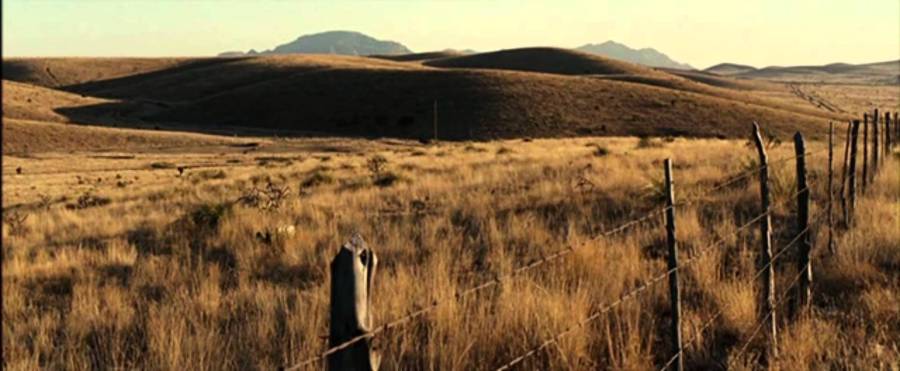It Comes at Night can only be described as an overtly competent film. There is no denying its impeccable atmosphere, generated, surprisingly enough, mainly by its haunting soundtrack that never misses a beat or misplaces a tone. The close confines of the cabin in the woods that Paul has hid his family in in order to ride out the apocalypse in relative safety make for a quaintly unsettling experience that is constantly teetering on the edge of terror. The interwoven nightmares that we experience along with Travis, Paul’s son, are an impressive attempt at combining the tone of Cormack McCarthy’s The Road with constrained surrealism à la Lynch in The Straight Story, where he found the perfect balance between coherently telling an emotional story and sprinkling in moments that are closer to his typical dream-like absurdity. The set is well constructed and presented, an incredibly important detail when it comes to creating paranoia and low-burning fear. Director Trey Shults has admitted to taking inspiration from Kubrick’s The Shining for the layout of the house that Paul and his family live in, deliberate leaving it unclear and confusing, a maze that the viewer’s mind can’t help but attempt to navigate. Overall, there’s no denying that the film is pretty damn good. So why, then, have audiences shunned it? Why do some hail it as the best horror movie of the past few years while others see in it nothing more than a polished turd?
The first part of the answer is simple – people hate being misled. The trailers for It Comes at Night made the movie seem much closer to the typical horror movie than it actually was. Most of its audience went in to see a straightforward monster flick, expecting the “It” in the title to refer to a zombie or a ghost. What they got instead was a visceral meditation on the nature of trust and the unreliability of the human brain’s perception of reality. Travis is as unreliable as narrators get, and that is where many of the seeming inconsistencies and plot holes arise from. None of the scenes we see through his eyes are representitive of what actually happens in the movie’s world. And that’s one of It Comes at Night‘s main stregths – the viewer is never put in a position of omniscience. We’re given just as much information as the characters dealing with the situations on screen. When Will, another survivor who happens upon the family by chance, moves his wife and son into Paul’s house, we’re given visual cues that make us doubt their true intentions. As Paul grows ever more suspicious and begins regretting his decision to invite them in, the viewer is still unsure as to the reality of the situation. Is Will a good guy? Is he simply waiting for the right time to strike? And no, in the end we realize there are no bad guys in this situation. Will and Paul both work towards the same goal – protecting their loved ones. They like each other as people, they like being together and keeping eachother company in the face of the overwhelming sense of isolation and ennui that is inherent to the deepest parts of any forest. But the world as they know it has collapsed, and no one can truly be trusted, except if they aren’t an immediate family member. The loneliness runs deep in It Comes at Night, bubbling just below the surface of each character’s perpetually uneasy demeanor.
The second thing that seems to have left many people upset is the lack of resolution to many of the film’s themes. It’s true, It Comes at Night raises many questions but rarely even so much as approaches an answer. How did Stanley the dog make it through the first door to the house, especially considering it was sick and lost in the woods just hours prior? Who opened the second, red door? Did Travis really see Will’s son sleepwalking? Were the events at the end of the movie indicative of the existence of some creature outside the house? Many audience members weren’t satisfied by the notion of a truly confused and possibly insane narrator. And it’s hard to argue this point because it comes down to personal preference. I personally thought that seeing the most important parts of the story through Travis’s eyes was a brilliant touch that fit the movie like a glove, thematically speaking. The way I saw the movie, there never really was an “It”. “It” is fear, coming at night when the characters are at their most vulnerable, creeping in the gloomy, dimly lit edges of the house. Travis is only unreliable during the night, when he is scared out of his mind and unable to stay asleep, constantly seeing scarier versions of the things that terify him in his waking life.
It Comes at Night is very much an experience and is definitely worth a watch for anyone willing to go into it with an open mind.











